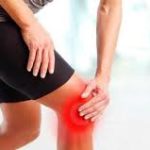Having knee pain is common. This joint is indeed particularly prone to trauma, arthritis and age-related wear. It is not the sedentary population that suffers the most, but physically active people.
The largest joint of the body in terms of a cartilaginous articular surface is the knee. It is also the most complex joint and, as such, presents a greater susceptibility to trauma, natural wear and infections. The painful knee represents a source of a handicap since it reduces the work capacity and the performance of the acts of the daily life.
In general, the assessment of a painful knee leads the doctor to look for the following information: the type of pain (mechanical or inflammatory), the presence of functional impotence and instability. The latter results in episodes of knee derailing with falls or a simple sensation of insecurity, blockages (limitation of the amplitude to the extension) or pseudo-blockages related to clashes of the cartilaginous surfaces.
In rare situations, blood tests are indicated, for example, to exclude or confirm Lyme arthritis or systemic lupus erythematosus.
Other exams
Standard radiography is indicated in case of trauma, tumoral pathologies, and arthritis or osteoarthritis. Bone scintigraphy (imaging examination in nuclear medicine) can be useful for the diagnosis of bone fissures, osteonecrosis or tumors. MRI is very useful in the presence of a traumatic pathology because it reveals ligamentous, meniscal, tendinous lesions and fractures that have gone unnoticed on standard radiographs, but it is often only necessary in part of possible surgical treatment.
Arthroscopy (a surgical technique involving the introduction of a small camera via an incision) is used when there is diagnostic doubt or in combination with a curative surgical procedure. Finally, articular puncture, which distinguishes mechanical damage from inflammatory disease, is indicated in all patients with joint effusion (excessive accumulation of fluid in the joint).
Management and treatment
Treatment depends on the cause of the sore knee. In most cases, as a first step and to reduce pain and inflammation, it is useful to apply cold packets or coated crushed ice, within 48-72 hours after trauma or in the presence of inflammation. The effect of cold is threefold. It limits inflammation by decreasing metabolism, decreases edema and hematoma, and reduces pain by "anesthetic" action. It is also recommended to favor the application of ice as an analgesic.
The application of heat is indicated in a second time in case of trauma and for the treatment of muscle contractures. It would promote the repair process and reduce muscle spasms.
A third measure to be taken is the immobilization and the elevation of the affected limb, with the aim of first reducing the inflammatory process and favoring the healing of tissues in the longer term. The knee is immobilized most often at 30 ° flexion, except in the presence of patellar pathologies. After the acute phase, for most pathologies, physiotherapy is essential and must be undertaken as soon as possible.
There are many turmeric supplement that would help you avoid this pain allowing you to move freely.

